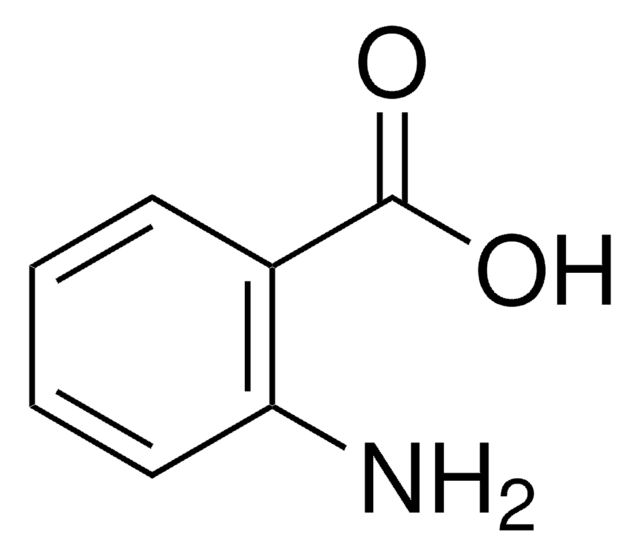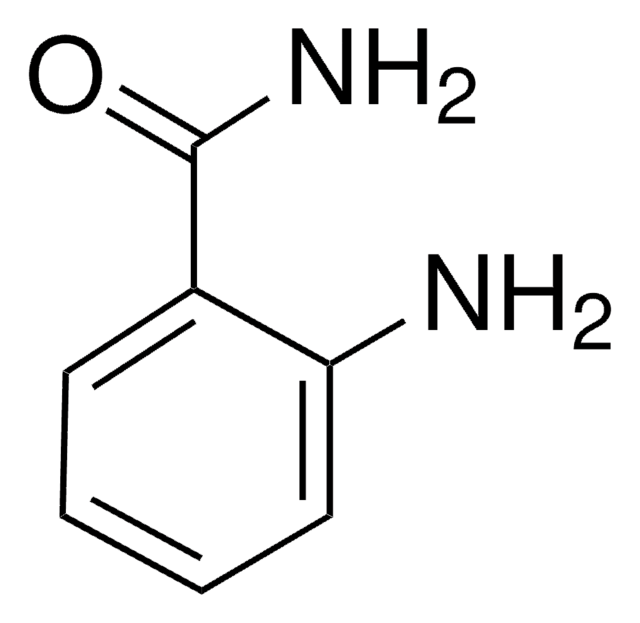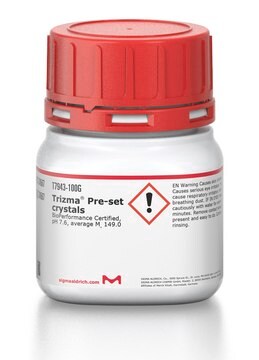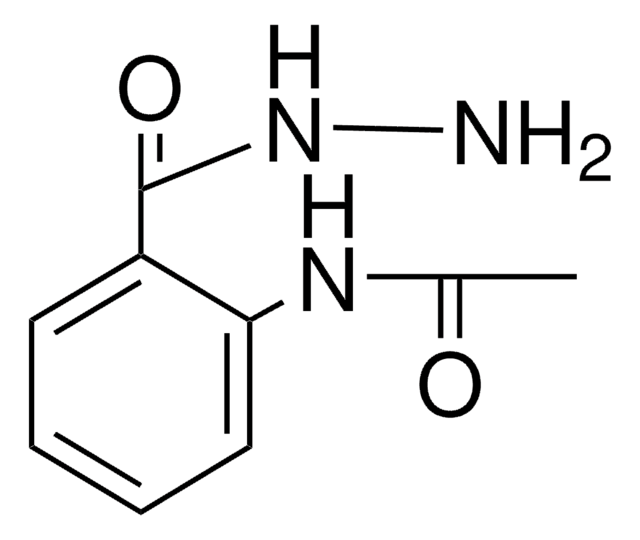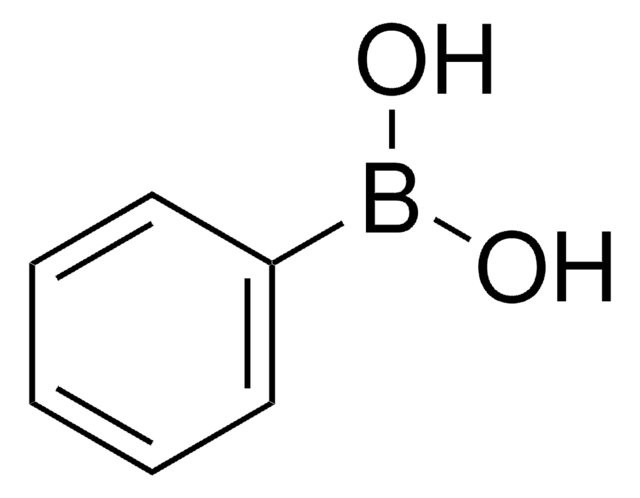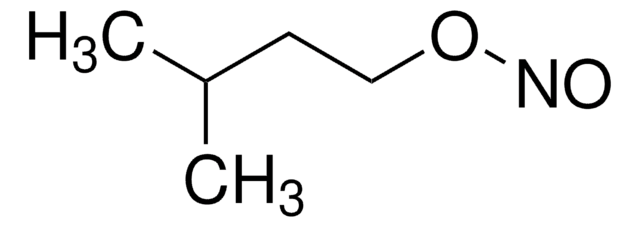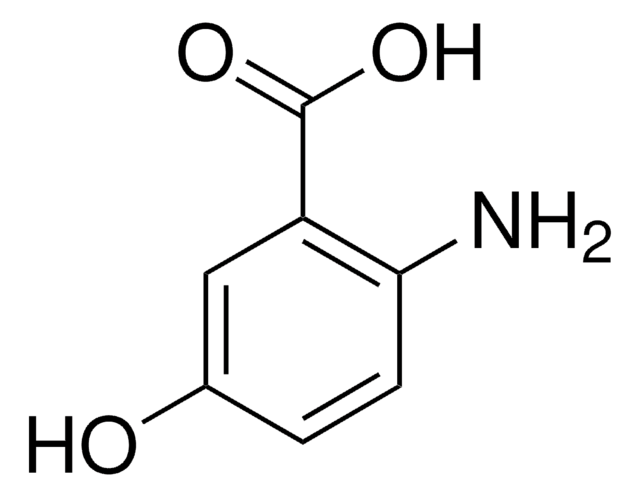10680
Anthranilic acid
puriss. p.a., ≥99.5% (T)
Sinonimo/i:
2-AA, 2-Aminobenzoic acid
About This Item
Prodotti consigliati
Densità del vapore
4.7 (vs air)
Livello qualitativo
Grado
puriss. p.a.
Saggio
≥99.5% (T)
Stato
solid
Residuo alla calcinazione
≤0.05% (as SO4)
Punto di fusione
144-148 °C (lit.)
145-147 °C
Anioni in tracce
chloride (Cl-): ≤500 mg/kg
sulfate (SO42-): ≤100 mg/kg
Cationi in tracce
Ca: ≤100 mg/kg
Cd: ≤5 mg/kg
Co: ≤5 mg/kg
Cr: ≤5 mg/kg
Cu: ≤5 mg/kg
Fe: ≤5 mg/kg
K: ≤50 mg/kg
Mg: ≤5 mg/kg
Mn: ≤5 mg/kg
Na: ≤50 mg/kg
Ni: ≤5 mg/kg
Pb: ≤5 mg/kg
Zn: ≤5 mg/kg
Gruppo funzionale
carboxylic acid
Stringa SMILE
Nc1ccccc1C(O)=O
InChI
1S/C7H7NO2/c8-6-4-2-1-3-5(6)7(9)10/h1-4H,8H2,(H,9,10)
RWZYAGGXGHYGMB-UHFFFAOYSA-N
Cerchi prodotti simili? Visita Guida al confronto tra prodotti
Categorie correlate
Descrizione generale
Applicazioni
- Fluorescent labeling of glycans.
- Synthesis of triptycene and derivatives, via diazotization reaction.
- As fluorescent label for the facile labeling of oligosaccharides (acidic and neutral).
- As fluorescent label for carbohydrate analysis.
- Derivatization of oligosaccharides.
- Preparation of poly(aniline-co-o-anthranilic acid) copolymers.
Altre note
Prodotti correlati
Avvertenze
Danger
Indicazioni di pericolo
Consigli di prudenza
Classi di pericolo
Eye Dam. 1
Codice della classe di stoccaggio
11 - Combustible Solids
Classe di pericolosità dell'acqua (WGK)
WGK 1
Punto d’infiammabilità (°F)
302.0 °F - closed cup
Punto d’infiammabilità (°C)
150 °C - closed cup
Dispositivi di protezione individuale
dust mask type N95 (US), Eyeshields, Faceshields, Gloves
Scegli una delle versioni più recenti:
Possiedi già questo prodotto?
I documenti relativi ai prodotti acquistati recentemente sono disponibili nell’Archivio dei documenti.
2-heptyl-3-hydroxy-4 (1H)-quinolone and structurally related analogs"
Protocolli
Mass Spectrometry of Glycans
Il team dei nostri ricercatori vanta grande esperienza in tutte le aree della ricerca quali Life Science, scienza dei materiali, sintesi chimica, cromatografia, discipline analitiche, ecc..
Contatta l'Assistenza Tecnica.